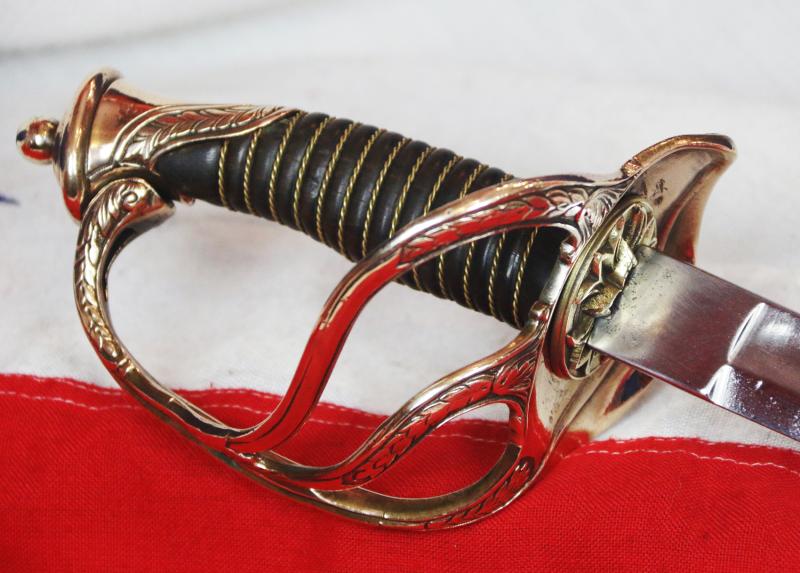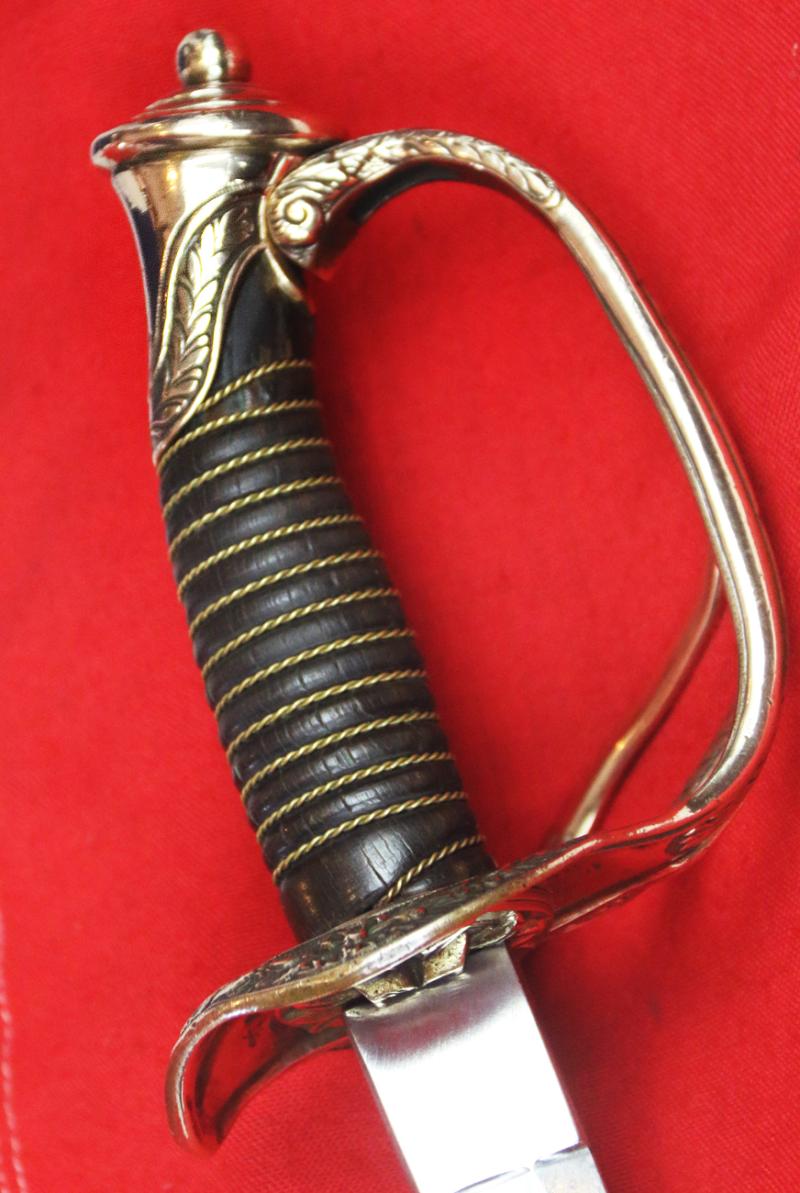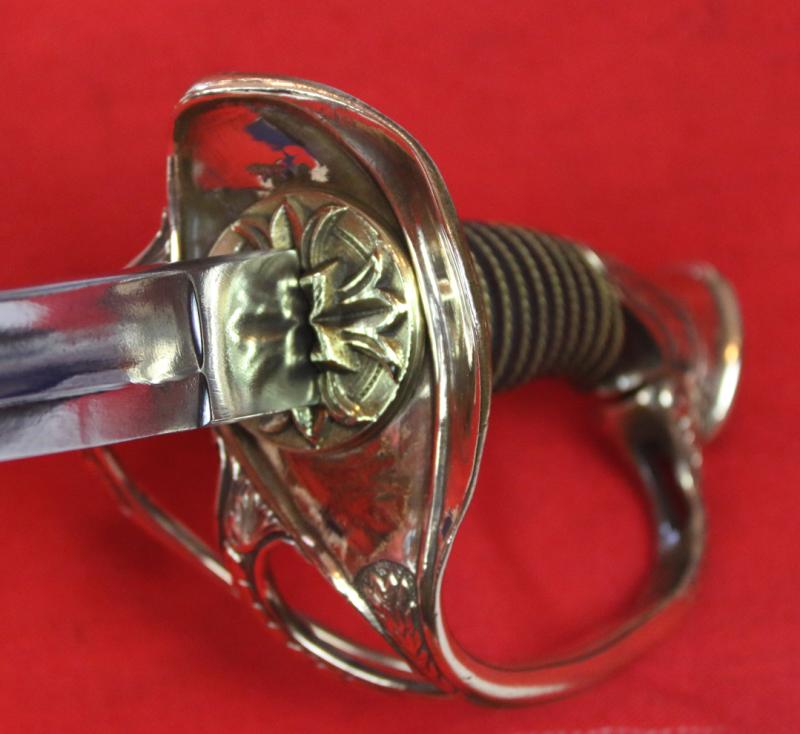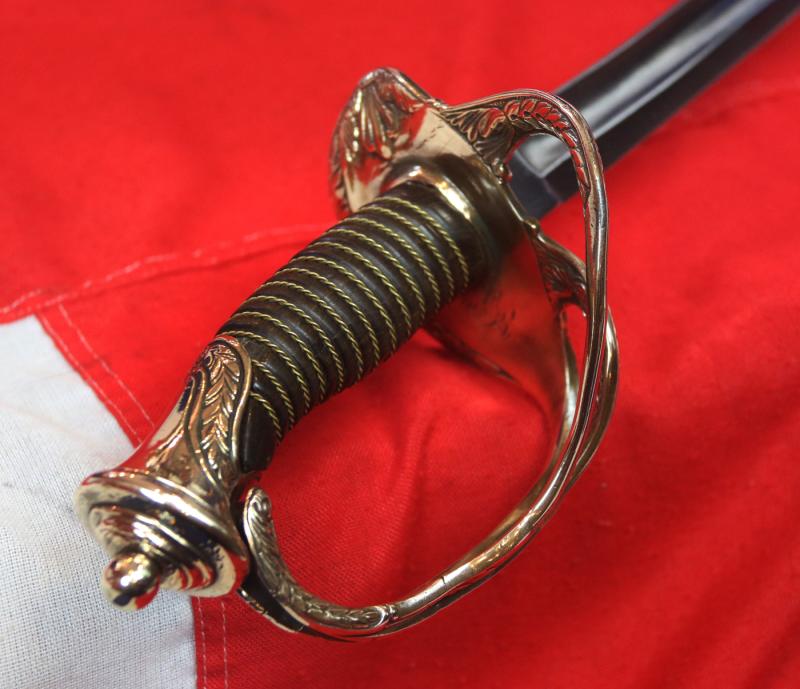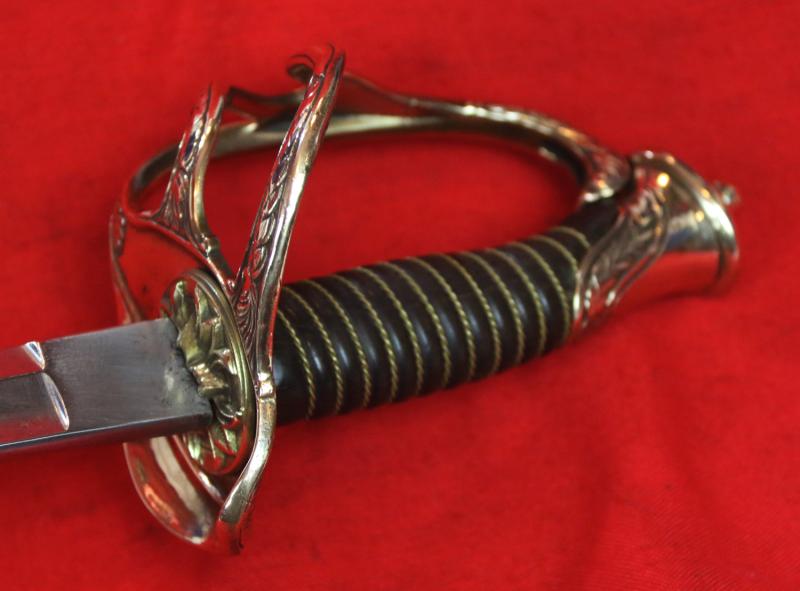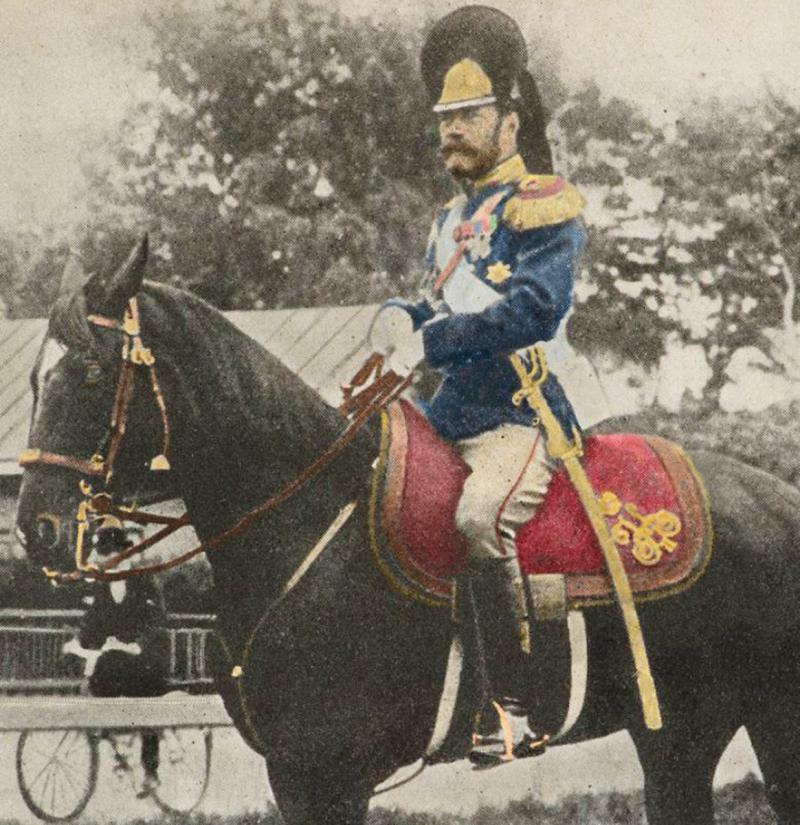A Most Rare & Stunningly Beautiful Imperial Russian Superior Cavalry Officer's Sword, Romanov Era, From the First Quarter to Mid 19th Century. Possibly A War Trophy of the Crimean War
Curved, bright polished single edge blade, cut with 2 fullers (one broad, one narrow), very fine brass hilt decorated throughout with laurel and acanthus leaves and foliage in relief, a knuckle bow with two bar guards, and a superb original wire bound polished horn grip, with a typically Russian form of forward slanted pommel, with pommel ball.
Original Imperial Russian Romanov period officer's swords of the 19th century appear very rarely indeed, as so few survived the revolution, and when they do, if they are the very fine quality examples, they can achieve extraordinarily high prices. It is certainly possible this sword is a trophy of the Crimean War.
This superb sabre would likely have seen its most combative service in the Crimea, such as at The Battle of Balaclava that is remembered in Britain for the actions of two British units. At the start of the battle, a large body of Russian cavalry charged the 93rd Highlanders, who were posted north of the village of Kadikoi. Commanding them was Sir Colin Campbell. Rather than "form square", the traditional method of repelling cavalry, Campbell took the risky decision to have his Highlanders form a single line two men deep. Campbell had seen the effectiveness of the new Minié rifles with which his troops were armed at the Battle of Alma, a month earlier, and he was confident that his men could beat back the Russians. His tactics succeeded. From up on the ridge to the west, Times correspondent William Howard Russell saw the Highlanders as a "thin red streak topped with steel", a phrase which soon became the "Thin Red Line".
Soon afterward, a Russian cavalry movement was countered by the Heavy Brigade, which charged and fought hand to hand until the Russians retreated. That caused a more widespread Russian retreat, including a number of their artillery units. After the local commanders had failed to take advantage of the retreat, Lord Raglan sent out orders to move up and to prevent the withdrawal of naval guns from the recently captured redoubts on the heights. Raglan could see those guns because of his position on the hill. In the valley, that view was obstructed, and the wrong guns were in sight to the left. The local commanders ignored the demands, which led to the British aide-de-camp, Captain Louis Nolan, personally delivering the quickly-written and confusing order to attack the artillery. When Lord Lucan questioned to which guns the order referred, the aide-de-camp pointed to the first Russian battery that he could see and allegedly said "There is your enemy, there are your guns", because of his obstructed view, which were wrong. Lucan then passed the order to the Earl of Cardigan, which resulted in the Charge of the Light Brigade.
The House of Romanov was the reigning imperial house of Russia from 1613 to 1917. They achieved prominence after Anastasia Romanovna married Ivan the Terrible, the first crowned tsar of all Russia. Nicholas II, the last Emperor of Russia, and his immediate family were executed in 1918, but there are still living descendants of other members of the imperial house.
Romanov 19th century history;
Paul I was murdered in his palace in Saint Petersburg in 1801. Alexander I, succeeded him on the throne and later died without leaving a son. His brother, crowned Nicholas I, succeeded him on the throne in 1825. The succession was far from smooth, however, as hundreds of troops took the oath of allegiance to Nicholas's elder brother, Constantine Pavlovich who, unbeknownst to them, had renounced his claim to the throne in 1822, following his marriage. The confusion, combined with opposition to Nicholas' accession, led to the Decembrist revolt. Nicholas I fathered four sons, educating them for the prospect of ruling Russia and for military careers, from whom the last branches of the dynasty descended.
Alexander II, son of Nicholas I, became the next Russian emperor in 1855, in the midst of the Crimean War. While Alexander considered it his charge to maintain peace in Europe and Russia, he believed only a strong Russian military could keep the peace. By developing the Imperial Russian Army, giving increased autonomy to Finland, and freeing the serfs in 1861 he gained much popular support for his reign.
The Crimean War was fought from October 1853 to February 1856 between the Russian Empire and an ultimately victorious alliance of the Ottoman Empire, France, the United Kingdom, and Sardinia-Piedmont.
Geopolitical causes of the war included the decline of the Ottoman Empire (the "Eastern Question"), the expansion of Russia in the preceding Russo-Turkish Wars, and the British and French preference to preserve the Ottoman Empire to maintain the balance of power in the Concert of Europe. The flashpoint was a disagreement over the rights of Christian minorities in Palestine, then part of the Ottoman Empire, with the French promoting the rights of Roman Catholics, and Russia promoting those of the Eastern Orthodox Church.
The Crimean War marked a turning point for the Russian Empire. The war weakened the Imperial Russian Army, drained the treasury and undermined Russia's influence in Europe. The empire would take decades to recover. Russia's humiliation forced its educated elites to identify its problems and recognise the need for fundamental reforms. They saw rapid modernisation as the sole way to recover the empire's status as a European power. The war thus became a catalyst for reforms of Russia's social institutions, including the abolition of serfdom and overhauls in the justice system, local self-government, education and military service.
In excellent condition overall considering this fabulous and incredibly rare sabre’s cavaly officer has obviously seen hand-to-hand combat, thus there is very light and minuscule overall surface wear to the steel blade, but it is still very fine indeed, very bright and wonderfully polished. On the hilt’s upper section of knuckle-bow, on the inner side, there is a very fine tiny combat-stress hairline {see photo 6}. Likely caused by a combat punch action impact of the hilt against a resistant object, possibly a helmet. Blade overall 38 .75 inches long, blade 31.75 inches long. No scabbard
Possibly by Schaaf & Söhne St. Petersburg.
We have seen Imperial Russian, of very similar quality and design, officer’s dragoon swords, such as a later pattern St Anne’s dragoon sword for bravery, sell for up to £30,000, so relatively, this sword is most inexpensive by comparison..
Code: 25399
3750.00 GBP



